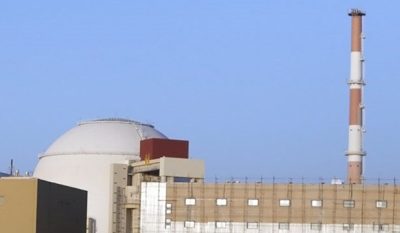Impending Catastrophe: A Billion Lives Hang in the Balance in Europe and the Middle East

All Global Research articles can be read in 51 languages by activating the Translate Website button below the author’s name.
To receive Global Research’s Daily Newsletter (selected articles), click here.
Click the share button above to email/forward this article to your friends and colleagues. Follow us on Instagram and Twitter and subscribe to our Telegram Channel. Feel free to repost and share widely Global Research articles.
***
Introduction
The world finds itself at a critical juncture as tensions escalate in Ukraine, claiming the lives of thousands on both sides. Meanwhile, Israel’s potential strike on Iranian nuclear development sites using US-built F-35 bomber aircraft looms, threatens to ignite a chain reaction of destabilization in the entire Middle East and risks a nuclear conflict with Russia.
In this unprecedented situation, the United Kingdom also faces the grim prospect of becoming a prime target. The global population stands on the precipice, with an unimaginable loss of one billion lives (12.5% of the global population) looming. Unfortunately, the urgency of this danger remains underappreciated by the international community, as the United Nations continues with its routine affairs, while Europe, in a state of fear and disarray, scrambles to build fallout shelters for its elites.
Uncertainty and Boundless Destruction
Both the war in Ukraine and the potential conflict in the Gulf defy any predictions regarding their scale or duration. However, one grim certainty persists: any nuclear confrontation knows no geographical boundaries, as the release of ionizing radiation obliterates life and spreads uncontrollably through wind and rain, contaminating everything in its path.
Root Causes and Unforeseen Consequences
This alarming scenario has emerged from territorial disputes and the forced displacement of indigenous communities and ethnic groups, whose claims to specific lands have escalated into geopolitical flashpoints. The consequences of this unprecedented global crisis cannot be accurately foreseen, but one thing is certain: the fabric of the current world order, encompassing international institutions and political boundaries, will undergo irrevocable and profound transformations in size and scope.
Documentation of Iran’s Nuclear Sites
Iran, a country under scrutiny due to its nuclear program, possesses numerous documented nuclear sites, including the Bushehr plant, a joint venture with Russia, the Natanz Enrichment Plant, and the Isfahan Nuclear Fuel Research and Production Centre. These facilities, designed for similar purposes as Israel’s long-standing nuclear weapons facility at Dimona in the Negev desert, heighten the already critical tensions in the region.
Conclusion
The impending catastrophe facing Europe and the Middle East demands immediate global attention and action. With a billion lives hanging in the balance, the international community must prioritize de-escalation, dialogue, and peaceful resolution of conflicts.
The United Nations, as the foremost global body, must rise to the occasion and address this unprecedented crisis head-on.
The world’s leaders must unite in their commitment to preventing the outbreak of nuclear warfare and embrace diplomacy as the only viable path forward. Failure to act decisively could result in an unimaginable loss of life, leaving an indelible scar on humanity for generations to come.
NOTE: There are at least seven, documented nuclear research development sites throughout Iran, including Bushehr, which is being built in partnership with Russia, the Natanz Enrichment Plant, and the Isfahan Nuclear Fuel Research and Production Centre, all of which are assumed to have, in part, the same end purpose as Israel’s long-standing, nuclear weapons facility at Dimona, in the Negev desert.
1. Bushehr Nuclear Power Plant: Located in the southwestern port city of Bushehr, this site is Iran’s first civilian nuclear power plant. It is being constructed with assistance from Russia and is primarily intended for generating electricity.
2. Natanz Enrichment Plant: Situated in central Iran, Natanz is one of the country’s most well-known nuclear facilities. It includes an underground enrichment facility where Iran has conducted uranium enrichment activities. Natanz has been the subject of international scrutiny due to its connection with Iran’s nuclear program.
3. Fordow Fuel Enrichment Plant: Located near the city of Qom, the Fordow facility was built inside a mountain to provide additional security. It is primarily used for uranium enrichment and has drawn attention from the international community.
4. Arak Heavy Water Reactor: Situated in the city of Arak, this facility was designed to produce isotopes for medical and industrial purposes. However, concerns have been raised in the past about the potential for plutonium production, which can be used in nuclear weapons.
5. Isfahan Nuclear Technology Center: This site, located near the city of Isfahan, is involved in various nuclear-related activities. It includes facilities for uranium conversion, fuel production, and research purposes.
6. Parchin Military Complex: Although not solely a nuclear site, the Parchin complex has drawn attention due to suspicions about possible nuclear-related activities. It is a military base where Iran has conducted conventional weapons testing, and there have been allegations of nuclear weaponization-related experiments taking place there.
7. Kashan Nuclear Research Center: The Kashan facility is a research center involved in nuclear-related research activities. It focuses on areas such as nuclear medicine, radiation applications, and agricultural research.
*
Note to readers: Please click the share buttons above. Follow us on Instagram and Twitter and subscribe to our Telegram Channel. Feel free to repost and share widely Global Research articles.
Hans Stehling (a pen name) is a regular contributor to Global Research.
Featured image: Nuclear Plant in Bushehr, Iran (Licensed under CC BY-SA 4.0)

